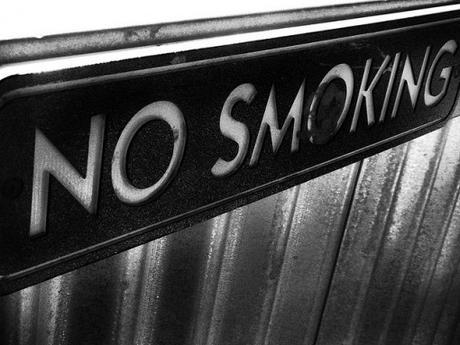What is Indoor Air Pollution?
Many people, when they think of air pollution, they think about smog and car emissions. This is what is called outdoor air pollution but it is more dangerous when it becomes indoor air pollution. Indoor air pollution occurs when certain air pollutants from particles and gases contaminate the air of indoor areas. These air pollutants can cause respiratory diseases or even cancer. Removing the air pollutants can improve the quality of your indoor air.
Millions of people around the world prepare their meals using traditional methods (i.e. wood, charcoal, coal, dung, crop wastes) on open fires. Such inefficient practices can increase the amount of air pollutants inside the home and can also cause serious health problems. According to WHO, 4.3 million people a year die from the exposure to household air pollution.
This type of pollution is significantly more dangerous due to how concentrated the air is in indoor environments. According to recent findings, over 2 million deaths occur every single year due to indoor air pollution. So what can we do about it? That is the question that many ask themselves every single day. Before you can fully comprehend the effects of indoor air pollution you must first be able to understand the causes of it as well as what we can do to improve our quality of air both indoors and outdoors.

Causes of Indoor Air Pollution
Toxic products, inadequate ventilation, high temperature and humidity are few of the primary causes of indoor air pollution in our homes.
1. Asbestos is the leading cause of indoor air pollution. Asbestos can be found in various materials used commonly in the automotive industry as well as home construction. They are most commonly found in coatings, paints, building materials, and ceiling and floor tiles. You won’t find asbestos as often as you used because newer products do not contain asbestos. However, if you have an old home that was constructed a long time ago, the risks for asbestos are much greater than that of a newer home. Asbestos has been banned in the US and is no longer being used.
2. Formaldehyde is another leading cause of indoor air pollution. It is no longer produced in the United States due to its ban in 1970 but can still be found in paints, sealants, and wood floors.
3. Radon which can be found underneath your home in various types of bedrock and other building materials, can also be a cause of indoor air pollution. Radon can get into the walls of your home and put both you and your family at risk.
4. Tobacco smoke that comes from outdoor and indoor areas can also be an indoor air pollutant.
5. Many contaminants that grow in damp environments can be brought in from outdoor areas. These contaminants such as mildew, mold, bacteria, dust mites, as well as animal dander, can come into the home and make you sick.
6. There are many objects that you have in your home that also cause indoor air pollution. Objects such as wood stoves, space heaters, and fireplaces, all put out carbon monoxide as well as nitrogen dioxide. There are still billions of people who use these types of fuels to heat their homes on a daily basis.
7. Other household products such as varnishes, paints, and certain cleaning products can also emit pollution into the air that you breathe inside your home.
Effects of Indoor Air Pollution
1. If Asbestos is found in your home it can cause you very serious health problems such as lung cancer, asbestosis, mesothelioma, and various other types of cancers.
2. If contaminants such as animal dander, dust mites or other bacteria get into the home there will also be some serious effects from them. You will start to experience asthma symptoms, throat irritation, flu, and other types of infectious diseases.
3. If lead is found in the home it can also be severely life threatening. It can cause brain and nerve damage, kidney failure, anemia, and a defective cardiovascular system.
4. Formaldehyde, one of the most common indoor air pollutants, can also cause health problems. You may experience irritation of the throat, eyes, and nose, as well as allergic reactions. There have been a number of cases where it has also caused cancer.
5. Tobacco smoke causes individuals to experience severe respiratory irritation, pneumonia, bronchitis, emphysema, heart disease, as well as lung cancer.
6. Chemicals such as those that are used in certain cleaning agents and paints can cause you to experience a loss of coordination, liver, brain, and kidney damage, as well as a number of types of cancer.
7. If you use gas stoves in your home it can cause respiratory infections and damage and irritation to the lungs.
7 Ways To Improve Indoor Air quality
1. Smoking is one of the most common types of indoor air pollution. The best thing to do is to quit smoking and make your home anti-smoking zone. The less smoke that is emitted into the air the less chance of one of the listed effects happening to someone that you love.

2. Make sure you check the ingredients on any of your cleaning supplies to make sure they are environmentally friendly. Do your homework on what is considered to be a dangerous ingredient. You can also find an environmentally friendly cleaning list online so you know exactly what to buy.
3. Have your home checked for asbestos. This is typically done before you move into the home. If you have a home that was built prior to the ban of asbestos, it is important to make sure there is none still lingering within the home.
4. Stop using gas stoves in your home as well as certain types of space heaters.
5. Have your home inspected for any mold, radon, or any other harmful chemical or bacteria that may be in your home. These types of inspections are traditionally done before you move in so keep that in mind as well.
6. Use a good vacuum cleaner that has strong brushes to keep out chemicals and allergens that can accumulate in your home. Areas in your home which are most commonly visited must be cleaned thoroughly by using the vacuum several times.
7. Most of the dirt comes in the home from the shoes. Keep a large mat out of every room that will reduce the amount of dirt, and other pollutants from getting into your home.
Understanding the causes and effects of indoor air pollution will help you to understand why it should be prevented and what you can do to prevent it yourself. There are various online resources that can help you to discover the best options for you and your family. Making small changes within the home can really make a huge difference. Having your home inspected on a regular basis can really help you to prevent any further damage to not only your home, but you and your family as well.

